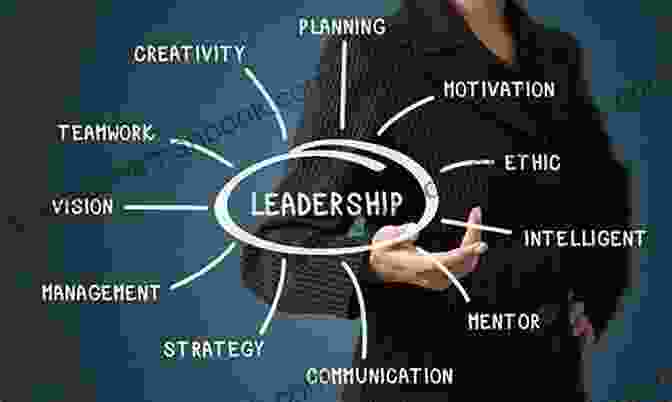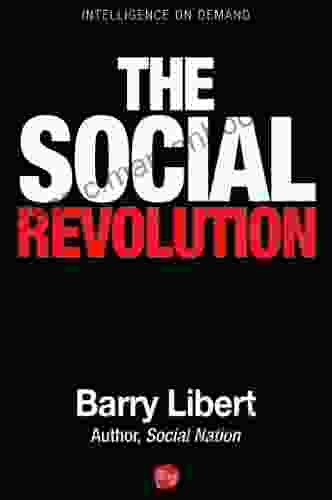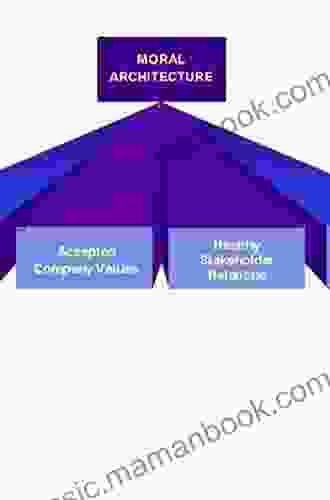Leadership As Moral Architecture: The Foundation of Ethical and Effective Organizations

Leadership is not merely about achieving organizational goals or managing a team. True leadership involves a higher purpose: creating a morally sound and ethically driven organization. Leadership, in essence, is moral architecture, where leaders serve as architects who design and construct the ethical foundation of their organizations. By prioritizing integrity, inclusivity, and social responsibility, leaders can foster a culture where individuals thrive and the organization flourishes.
4.1 out of 5
| Language | : | English |
| Text-to-Speech | : | Enabled |
| Enhanced typesetting | : | Enabled |
| Word Wise | : | Enabled |
| Print length | : | 232 pages |
| File size | : | 3142 KB |
| Screen Reader | : | Supported |
| Paperback | : | 24 pages |
| Item Weight | : | 3.52 ounces |
| Dimensions | : | 9 x 0.35 x 12 inches |
The Pillars of Leadership as Moral Architecture
The concept of leadership as moral architecture rests upon three pillars:
1. Integrity
Integrity is the bedrock of moral architecture. Leaders who embody integrity act consistently with their values and principles, even when faced with challenges or temptations. They are honest, transparent, and accountable in their decisions and actions. By demonstrating integrity, leaders create a culture of trust and respect, where individuals feel safe to speak up and challenge unethical practices.
2. Inclusivity
Creating an inclusive workplace is essential for moral architecture. Inclusive leaders value diversity, equity, and belonging. They actively seek out and embrace individuals from all backgrounds and perspectives, ensuring that everyone has a voice and feels respected. By fostering a culture of inclusivity, leaders create an environment where innovation flourishes and collaboration thrives.
3. Social Responsibility
Leaders as moral architects recognize that organizations have a responsibility to not only their shareholders but also to the broader society. They prioritize sustainability, corporate social responsibility, and ethical decision-making. By aligning their organization's actions with societal values, leaders can create a positive impact on the community and the world at large.
The Impact of Moral Architecture on Organizational Success
Organizations built on a foundation of moral architecture experience a myriad of benefits, including:
1. Enhanced Reputation
Organizations with a strong moral compass attract and retain employees, customers, and partners who share their values. A positive reputation not only enhances brand image but also attracts top talent and drives customer loyalty.
2. Increased Employee Engagement
Employees are more likely to be engaged and motivated when they believe their organization acts ethically and responsibly. A culture of integrity and inclusivity fosters trust and empowers individuals to perform to the best of their abilities.
3. Improved Decision-Making
Moral architecture provides a guiding framework for decision-making. Leaders can navigate complex ethical dilemmas with confidence, knowing that their choices align with the organization's values. This can prevent costly mistakes and enhance organizational resilience.
4. Sustainable Growth
Organizations that prioritize social responsibility and environmental stewardship are more likely to achieve sustainable growth. By addressing the needs of both their stakeholders and the community, they create a business model that is both profitable and sustainable.
Practical Applications of Leadership as Moral Architecture
Leaders can implement moral architecture in their organizations through various practical actions:
1. Establish a Clear Code of Ethics
A well-defined code of ethics serves as a roadmap for ethical conduct within the organization. It outlines the organization's values, principles, and expectations of employee behavior.
2. Foster Open and Transparent Communication
Encouraging open dialogue and feedback is crucial for maintaining a culture of integrity. Leaders should create channels for employees to voice concerns and report unethical behavior without fear of retaliation.
3. Promote Diversity and Inclusion
Intentionally creating an inclusive workplace involves actively seeking out diverse candidates, establishing employee resource groups, and providing opportunities for professional development for all individuals.
4. Integrate Social Responsibility into Business Strategy
Leaders should consider the social and environmental impact of their organization's decisions. By aligning business strategy with societal values, organizations can make a positive contribution to the community.
Leadership as moral architecture is not merely an ideal but a necessity in today's complex and rapidly changing business landscape. By prioritizing integrity, inclusivity, and social responsibility, leaders can create organizations that are not only successful but also morally sound. In ng so, they not only enhance organizational performance but also contribute to a more just and ethical society. As the adage goes, "Leaders leave a legacy, not a balance sheet." By embracing the role of moral architect, leaders can build organizations that have a lasting positive impact on the world.

4.1 out of 5
| Language | : | English |
| Text-to-Speech | : | Enabled |
| Enhanced typesetting | : | Enabled |
| Word Wise | : | Enabled |
| Print length | : | 232 pages |
| File size | : | 3142 KB |
| Screen Reader | : | Supported |
| Paperback | : | 24 pages |
| Item Weight | : | 3.52 ounces |
| Dimensions | : | 9 x 0.35 x 12 inches |
Do you want to contribute by writing guest posts on this blog?
Please contact us and send us a resume of previous articles that you have written.
 Top Book
Top Book Novel
Novel Fiction
Fiction Nonfiction
Nonfiction Literature
Literature Paperback
Paperback Hardcover
Hardcover E-book
E-book Audiobook
Audiobook Bestseller
Bestseller Classic
Classic Mystery
Mystery Thriller
Thriller Romance
Romance Fantasy
Fantasy Science Fiction
Science Fiction Biography
Biography Memoir
Memoir Autobiography
Autobiography Poetry
Poetry Drama
Drama Historical Fiction
Historical Fiction Self-help
Self-help Young Adult
Young Adult Childrens Books
Childrens Books Graphic Novel
Graphic Novel Anthology
Anthology Series
Series Encyclopedia
Encyclopedia Reference
Reference Guidebook
Guidebook Textbook
Textbook Workbook
Workbook Journal
Journal Diary
Diary Manuscript
Manuscript Folio
Folio Pulp Fiction
Pulp Fiction Short Stories
Short Stories Fairy Tales
Fairy Tales Fables
Fables Mythology
Mythology Philosophy
Philosophy Religion
Religion Spirituality
Spirituality Essays
Essays Critique
Critique Commentary
Commentary Glossary
Glossary Bibliography
Bibliography Index
Index Table of Contents
Table of Contents Preface
Preface Introduction
Introduction Foreword
Foreword Afterword
Afterword Appendices
Appendices Annotations
Annotations Footnotes
Footnotes Epilogue
Epilogue Prologue
Prologue David Alton Hedges
David Alton Hedges Paul Barron
Paul Barron Rob Gifford
Rob Gifford Aria Norton
Aria Norton Nina Stewart
Nina Stewart Rachel Hanna
Rachel Hanna James Lee Burke
James Lee Burke Brian Capon
Brian Capon John Lewis Gaddis
John Lewis Gaddis Shirley Raye Redmond
Shirley Raye Redmond Brandon Roe
Brandon Roe Arthur N Applebee
Arthur N Applebee Gayden Metcalfe
Gayden Metcalfe Suu Morishita
Suu Morishita Writing On The Wall
Writing On The Wall Jay Clarke
Jay Clarke Janie Archer
Janie Archer Holly Elissa Bruno
Holly Elissa Bruno Dr Georgi Losanov
Dr Georgi Losanov Kindle Edition
Kindle Edition
Light bulbAdvertise smarter! Our strategic ad space ensures maximum exposure. Reserve your spot today!
 Felix HayesFollow ·15.3k
Felix HayesFollow ·15.3k Jeffrey CoxFollow ·11.3k
Jeffrey CoxFollow ·11.3k H.G. WellsFollow ·18.6k
H.G. WellsFollow ·18.6k Levi PowellFollow ·7.3k
Levi PowellFollow ·7.3k Ernest ClineFollow ·10.3k
Ernest ClineFollow ·10.3k Leslie CarterFollow ·15.7k
Leslie CarterFollow ·15.7k Henry Wadsworth LongfellowFollow ·3.7k
Henry Wadsworth LongfellowFollow ·3.7k Ricky BellFollow ·6.5k
Ricky BellFollow ·6.5k

 Bryan Gray
Bryan GrayCello Alternativo: Exploring Contemporary Pizzicato...
: Embracing the Avant-Garde Within...

 Victor Hugo
Victor HugoThe Social Revolution: Barry Libert's Vision for a More...
In a world where...

 Tony Carter
Tony CarterA Comprehensive Guide to Crafting Clear and Effective Job...
A job description is a critical tool...

 Deacon Bell
Deacon BellSelected Poems And Prose Lorenzo Da Ponte Italian Library
Lorenzo Da Ponte, born...

 Francisco Cox
Francisco CoxWhat You Need To Know About Opportunity Cost: A...
Opportunity cost is a fundamental concept...

 Bill Grant
Bill GrantWhy Our Kids With Behavioral Challenges Are Falling...
Every year,...
4.1 out of 5
| Language | : | English |
| Text-to-Speech | : | Enabled |
| Enhanced typesetting | : | Enabled |
| Word Wise | : | Enabled |
| Print length | : | 232 pages |
| File size | : | 3142 KB |
| Screen Reader | : | Supported |
| Paperback | : | 24 pages |
| Item Weight | : | 3.52 ounces |
| Dimensions | : | 9 x 0.35 x 12 inches |












